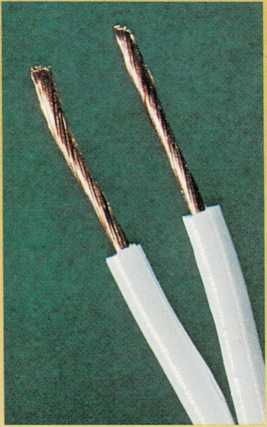A push in a wire
should go.
Click! The minute you turn on a lamp or a radio, something happens—a
light bulb glows or sounds come out. But electricity doesn’t jump into
the lamp or the radio. It flows through wires.
The lamp and the radio run on what is called current [(kur]{.smallcaps}
uhnt) electricity. Current electricity is not like static electricity.
Current electricity is electricity that travels steadily along a
pathway. This pathway is the wires that carry the electric current to
where it

The center of the wire is a metal, such as copper. Metals have electrons
that are free to move about. So, the electrons can move along the metal.
The outside of the wire is made of rubber or plastic. The electrons in
rubber or plastic are held tightly to their atoms. They can’t move from
one atom to another.
When the electric current is turned on, the metal part of the wire
conducts (kuhn [duhkts),]{.smallcaps} or carries, the electricity. The
electrons push along the wire from atom to atom, carrying electrical
energy. But the plastic or rubber covering doesn’t carry electricity.
So, the rubber or plastic covering insulates (IN suh layts), or seals
off, the wire. It keeps the moving electrons from leaving the path to
your lamp or radio.

The metal part of the wire carries electricity. The rubber or plastic
covering keeps the electric current from leaving the wire.



